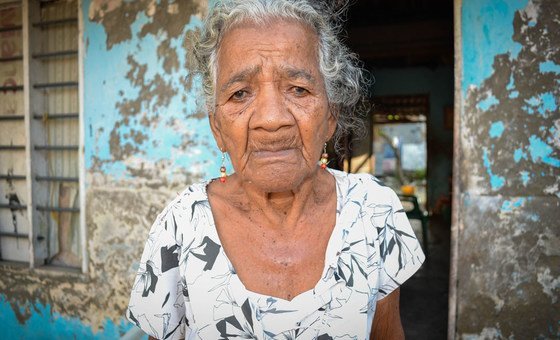In Latin America and the Caribbean, the deterioration of social protection coverage in old age Up to now, it has left 34.5% of people over the age of 65 without any type of income or pension, which aggravates their vulnerability, revealed a new report of the International Labor Organization (ILO).
The publication recalls that social security it is a human right present in the international instruments on the matter and calls for compliance with the basic guarantees of life throughout life, which include economic security for the elderly. “This means guaranteeing economic security during the period of withdrawal from the labor force or when there are difficulties in having labor income,” he stresses.
The analysis indicates that in the region, the precariousness of the elderly worsened with the pandemic of COVID-19, detailing that the proportion of those without employment income or pensions increased from 31.9% in 2019 to 34.6% in 2020 and to 34.5% in 2021.
The disaggregated data indicates that 46.8% of those over 65 receive a pension, 5.1% receive labor income and a pension, while 13.6% report only labor income. Total, only 51.9% have a pension.
Coverage against risks throughout life
The ILO highlighted the importance of social protection systems, understood as the set of policies and programs that ensure comprehensive coverage against the different social risks during the life cycle, as evidenced by the pandemic, and affirms that “social protection is essential to promote inclusion and social cohesion, the reduction of poverty and disparitiesespecially in a context marked by a crisis that has hit the most vulnerable sectors the hardest.”
He also stressed that social protection for the elderly should include the access to health and care servicesand emphasized that these must be central parts of a comprehensive system of social protection.
The study warns that the lack of resources such as savings or other private sources and the decreased ability to generate labor income at advanced ages, can lead to situations of poverty in old age.
Contributory and non-contributory systems
The UN agency explained that contributory pension systems ensure continuity of incometo the extent that the age requirements and years of contribution required to obtain the benefit are met, which depends, among other things, on formal employment trajectories.
Of the pension programs non-contributory, pointed out that they are the answer to close the gaps in economic security in old age guaranteeing a social protection floor in pensions.
In this line he quoted the case of women in the region, who have lower rates of labor participation, higher unemployment rates, income inequality, low contribution density and the use of mortality tables by gender that result in individual capitalization schemes with lower pensions compared to those of men. Therefore, he added, it is necessary to establish non-contributory pension schemes that ensure a floor of social protection in old age.
In the region, non-contributory pensions have a long history with a wide variety of programs, some of which have been around for several decades and others have been introduced in recent years. “The pandemic has put pressure on expanding coverage, improving benefits, making access conditions more flexible for beneficiaries, among other response measures,” the document emphasizes.
With the emergence of the pandemic, many countries made reforms to their pension systems with different emphasis depending on the conditions of each nation.
“The evidence analyzed shows that the pension reform has occupied a preponderant place and that, in many cases, these are initiatives that complement previous reforms or that persist over time because they have not achieved the necessary consensus in the past,” he said. .
Objectives of social protection systems
According to the ILO, social protection systems must have three objectives: coverage, sufficiency and sustainability.
The difficulties in achieving these objectives have become more acute after the pandemic given the uncertainties about the economic recovery capacitythe smaller fiscal spaces, the increase in inflationary pressures and the rise in interest rates, among other factors.
The traditional structural shortcomings such as the high level of informalityalterations in the organization of production and work, the aging of the population and the increase in dependency rates, and the incidence of natural disasters, add to the obstacles to sustaining social protection systems.
challenges
The ILO listed ten challenges for the consolidation of social protection systems for the elderly population in Latin America and the Caribbean:
- Recover economic growth
- Increase formal employment
- Increase and consolidate fiscal space
- Consolidate contributory regimes that ensure sufficient and sustainable benefits
- Strengthen non-contributory schemes financed with general revenue resources
- Establish adequate mechanisms for updating the value of benefits in response to inflation in each country
- Incorporate solidarity financing mechanisms to address the special situation of semi-contributory regimes
- Achieve universal coverage through the sum of contributory, semi-contributory and non-contributory regimes that consider gender gaps and income ranges, promoting the strengthening of governance and coordination of the system as a whole
- Ensure protection from health risks for the elderly population, regardless of their income situation
- Contemplate the possible effects and institutional requirements to face the effects in the transition periods between policies



![[Img #74675]](https://thelatestnews.world/wp-content/uploads/2024/12/They-discover-a-new-class-of-X-ray-sources-in-the-150x150.jpg)










